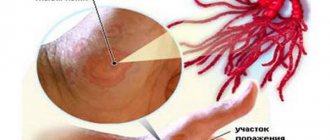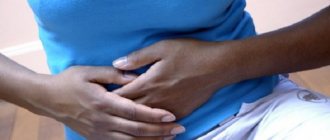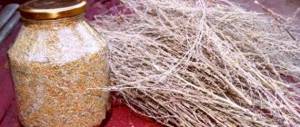What is bartholinitis?
Is treatment at home possible, or is it necessary to stay in a hospital? What kind of disease is it, how does it progress? What studies are used to diagnose, what tests are required to be taken in order for adequate therapy to be prescribed? Such questions are asked by those who have had to deal with the disease. We must warn you right away: self-medication of bartholinitis is dangerous to health. If the disease becomes chronic, it will be quite difficult to get rid of it.
In most cases, chronic bartholinitis is treated with surgery, during which the gland must be completely removed.
The essence of pathology
In medicine, inflammatory damage to the Bartholin gland is called bartholinitis . This gland is located in the structure of the large sex gland.
It is responsible for the production of transparent lubricant, which appears during mechanical stress or sexual arousal. Thanks to this, the moisture of the genital organs and the normal course of sexual intercourse are maintained.
Pathology can occur at different ages, but women aged 20-35 are more susceptible to it. The prevalence of the disease is quite high - it is 1 case in 50 women.
This disease does not occur in children because the glands do not develop until puberty.
Anatomy of the female genital organs
The exact anatomical position of the glands is the posterior third of the vestibule of the labia majora. In structure, these are paired sebaceous-sweat glands. In a healthy state, they are almost impossible to notice without the appropriate knowledge. The dimensions of the organs do not exceed 1.5–2 cm in width, and in the length of the excretory duct – up to 2.5 cm.
The glands become active when a girl reaches puberty. After menopause, their activity decreases.
Fluid production increases with sexual arousal. The ducts open and intensive secretion begins, which prevents pain and microtrauma of internal organs during sexual intercourse. With weak activity of the Bartholin glands, a woman experiences pain and discomfort during sex.
Causes
Before treating a pathology, you need to analyze the causes of its occurrence . The development of the disease is caused by the penetration of infectious pathogens into the Bartholin gland.
Most often, the provoking factors are diseases that are sexually transmitted. These include trichomoniasis, gonorrhea, and chlamydia.
Sometimes bartholinitis is diagnosed, the causative agent of which is other microorganisms. These can be streptococci, staphylococci, E. coli. However, in most cases, the inflammatory process becomes a consequence of the activity of several infections at once.
Pathology most often occurs when pathogenic microorganisms enter the Bartholin gland from the urethra or vagina, which is typical for colpitis or urethritis. However, in some cases, the infection enters the gland through the flow of lymph or blood.
Women's diseases. Inflammation of the Bartholin glands
The risk of disease increases in the following cases:
- Violation of personal hygiene rules, especially during menstruation , increases the risk of infection entering directly into the ducts.
- Local damage allows infection to enter the gland.
- Wearing tight underwear provokes a disruption of the normal outflow of gland secretions. As a result, stagnation occurs in the organ. This creates favorable conditions for the entry of harmful microorganisms.
- Promiscuous sex life significantly increases the risk of contracting sexually transmitted infections.
- Chronic foci of infection in the body are pyelonephritis, caries. In such a situation, pathogenic microorganisms enter the gland with lymph or blood.
- Immunity disorders, vitamin deficiency, hypothermia - all these factors weaken the body's protective functions. This increases the risk of pathogenic microorganisms entering the gland.
- Surgical interventions on the genitourinary organs - the risk increases if sanitary rules are violated or the doctor’s recommendations are not followed in the postoperative period.
Prevention
Preventive measures allow you to protect yourself from infectious diseases, which will reduce the risk of bartholinitis. It is necessary to pay attention to the restoration of immunity . The stronger it is, the less likely it is to develop an inflammatory process. The set of preventive measures includes the following:
- timely adoption of measures to eliminate infectious diseases;
- use of means of protection against unwanted pregnancy;
- compliance with hygiene standards;
- ensuring adequate sleep;
- proper nutrition.
Use of contraception
One of the reasons for the development of bartholinitis is infectious diseases. Barrier methods of protection can reduce the risk of their occurrence. The most effective way of protection is the use of condoms . The uterine device and contraceptive sponges do not prevent infectious agents from entering the body. Suppositories and gels for vaginal administration also have an antimicrobial effect .
Timely treatment of foci of infection
Any inflammatory process in the body can provoke bartholinitis. If you immediately take measures to eliminate the disease, you can avoid complications. Even caries can cause inflammation in the vulva area. This is due to the fact that pathogenic organisms tend to travel through the lymph.
Maintaining personal hygiene rules
Regular procedures for cleansing the surface of the genital organs do not allow bacteria to multiply. Women who do not keep their intimate area clean are the most vulnerable to infectious diseases. Compliance with hygiene standards reduces the risk of developing gynecological diseases. These include the following:
- It is not recommended to use hand soap to clean intimate areas. It is advisable to use specialized tools.
- When washing the genitals, do not use washcloths or sponges. They can damage the mucous surface.
- Hygiene procedures must be carried out twice a day.
- Particular attention is paid to the choice of underwear. It should be convenient and of high quality.
- When washing your genitals, you need to pay attention to the temperature of the water. Hypothermia provokes the development of unwanted diseases.
- It is strictly forbidden to use other people's personal hygiene items.
Balanced diet
The state of the immune system depends on the quality of the diet. Food should be enriched with carbohydrates, proteins and fats. Eating fruits and vegetables will provide the body with vitamins. Dairy products are high in calcium. Protein responsible for muscle growth is found in beef, chicken, eggs and legumes. Fish is rich in healthy fats, phosphorus, iodine, selenium and magnesium.
Full sleep
Disturbances in the functioning of the immune system appear against the background of physical fatigue. It often develops as a result of lack of sleep. A person becomes more absent-minded and vulnerable to various pathologies. The likelihood of exacerbation of chronic ailments increases. The minimum duration of sleep should be at least eight hours. It is recommended to ventilate the room and go to bed at the same time.
Regular visits to the gynecologist
Most female diseases at the initial stage are asymptomatic. In order to diagnose them in time, you should undergo preventive examinations with a gynecologist at least twice a year. It is especially important to follow this rule for women who have had an abortion, diagnostic surgery or infectious diseases. At an appointment with a gynecologist, a smear is taken for microflora and a visual assessment of the genital organs is carried out . If necessary, the woman is referred for additional examination.
Clinical picture
Before treating inflammation of the Bartholin gland at home, you need to analyze the symptoms of the disease. Bartholinitis can be acute or chronic.
So, an acute process is accompanied by the following symptoms:
- A sharp increase in temperature . A woman may feel weakness, headache, and burning in the genitals.
- Severe pain in the lower abdomen and tingling during urination . Usually these signs appear after 2 days.
- Frequent urge to urinate . They can also be observed if the bladder is completely empty.
- Pain syndrome in the lumbar region . Its appearance is due to impaired renal function.
- Vaginal discharge . They can be purulent or mucous in nature.
- Pain on palpation of the external genitalia . Swelling may also occur.
- Redness of the vagina.
- Discomfortable sensations in the perineum.
- Formation of a compaction at the base of the labia majora . It can have different sizes, depending on the degree of neglect of the disease.
- Purulent discharge from the seal.
The chronic form of the disease is characterized by less pronounced manifestations. In this case, women may experience periodic pain in the labia area, discomfort during sexual intercourse and redness of the skin.
Anatomy of the gland
The Bartholin gland is located in the lower part of the labia majora. It consists directly of the glandular tissue itself and excretory ducts from 1 cm to 4-5 cm in length. The mouth of the tubules opens in a groove located between the labia minora and the remnants of the hymen. Sometimes the Bartholin gland is surrounded by bundles of muscle fibers. It is small in size - no more than 1 cm in diameter. In a calm state, it is not possible to palpate it; changes are noticeable only when there is inflammation or the formation of a cyst.
The Bartholin gland secretes a viscous, jelly-like secretion, especially a lot when a woman is aroused. A small amount of it is released in a calm state, due to which women do not feel tightness, dryness in the vagina and other unpleasant sensations. By pressing on the gland and duct, you can get a small amount of secretion. There is no need to do this yourself, as it can cause inflammation.
On the surface of the labia minora and majora there are a large number of sebaceous and sweat glands. They are located relatively evenly over the entire surface. Sometimes their inflammation (boils) is confused with bartholinitis. A distinctive feature of the latter is that the process begins at the bottom of the labia majora, while the boil can be located anywhere.
General principles of therapy
How to relieve inflammation of the Bartholin gland? This question worries many women who are faced with this problem. The choice of treatment tactics depends on the stage of development of the disease.
In the acute form of the disease, the following is used:
- compliance with bed rest;
- applying cold compresses to the inflamed area;
- sexual abstinence;
- antibacterial therapy;
- anti-inflammatory drugs.
Your doctor will tell you what antibiotics to take for inflammation of the Bartholin gland . Various categories of drugs can be used to treat pathology - penicillins, fluoroquinolones, cephalosporins.
Anti-inflammatory therapy includes treating the affected area with Vishnevsky ointment . You can also apply tampons with Levomekol or Ichthyol ointment. Local treatment with solutions of Miramistin or Chlorhexidine is often used.
The choice of treatment method is made by the doctor depending on the stage of the disease. If you do not immediately consult a doctor, the pathology will begin to progress rapidly. In such a situation, surgical intervention will be required.
Home treatment for bartholinitis
If you consult a doctor at the initial stage of bartholinitis, he will prescribe a treatment regimen that can be applied at home.
Application of external agents
With bartholinitis, an important role is played by the use of external agents.
Several times a day, 30 minutes each
Until acute symptoms subside
Applying a bandage at night
Until symptoms resolve
Every morning, evening
Antibiotic therapy
The acute stage of bartholinitis requires the use of antibiotics. The doctor selects the means for treatment after conducting tests, identifying the causative agent of the infection, and its sensitivity to the drugs. Antibiotic therapy has features:
- The duration of treatment is prescribed taking into account the severity of the disease.
- Form of use: tablets, injections.
- The dosage is determined individually.
- Popular drugs are Ceftriaxone, Amoxiclav, Tsiprolet.
Traditional methods of treatment
How to remove inflammation of the Bartholin gland yourself? To do this, you can use effective folk remedies. Ointments, baths and lotions are usually used.
Experts advise combining home recipes with medications - this will help to significantly increase the effectiveness of therapy.
So, the most effective means include the following:
- An excellent option would be baked onions . To do this, the onion with the husk needs to be baked in the oven or boiled. Then the vegetable must be mashed, cooled and wrapped in a bandage or gauze. Apply the resulting product to the inflamed area three times a day. The duration of the procedure should be about 1 hour. This product should be used until complete recovery - it has an anti-inflammatory, healing and disinfectant effect.
- 300 g of walnuts using a meat grinder Consume this mixture a couple of hours after meals. This should be done 4 times a day, 1 large spoon. 20 minutes after consuming the composition, you need to drink a decoction of herbs.
- To prepare a healing decoction, you need to mix walnut leaves, valerian roots, young pine shoots, meadowsweet and Icelandic moss in equal parts. Take a tablespoon of the mixture, add 250 ml of boiling water and place in a steam bath for 15 minutes. Cool to room temperature, strain and take a third of a glass.
- Grind 150-200 g of thornless aloe leaves using a meat grinder . Then add 250 ml of dry red wine and 300-400 g of honey. Mix everything well and put in a steam bath for 50 minutes. Strain the cooled product and take 1 large spoon. It is recommended to do this 2-3 times a day before meals.
- Take leaves of nettle, yarrow, blackberry and black elderberry in equal proportions. Use 1 tablespoon of each herb. Add 500 ml of boiling water to the resulting mixture and leave to infuse for 1.5 hours. Lotions are done in the morning and before bedtime.
- An effective remedy is warm sitz baths made from a weak solution of potassium permanganate . The duration of the procedure should be 15-20 minutes. To prepare a medicinal solution, you can also take oak bark, calendula, chamomile and eucalyptus. To do this, mix the herbs in equal parts, add hot water and leave to infuse for half an hour. Then you can pour it into the container in which you plan to make the bath.
Treatment with drugs
If a Bartholin gland cyst is detected, treatment without surgery is carried out using the following medications:
- painkillers (Spazmolgon, Analgin) and cold on the inflamed gland (for 40 minutes);
- antibiotics (Ceftriaxone, Doccef, Azithromycin, Amoxiclav - they are selected by the doctor) or sulfonamide drugs. The course lasts from 7 to 10 days;
- local procedures - Vishnevsky ointment, Levomikol;
- treatment with antiseptic solutions - Chlorhexidine, Miramistin;
- antihistamines that reduce swelling and itching - Tavegil, Suprastin, Claritin, Eden;
- when the acute stage has passed (3-4 days after the start of treatment) - UHF therapy, magnetic therapy, laser, inductothermy;
- treatment of sources of re-infection – urethritis, colpitis;
- immunomodulators (for the prevention of relapses) - Laferobion, Timalin, Viferon.
Features of the disease during pregnancy
Any infectious pathologies during pregnancy can negatively affect the development of the child. In such a situation, the fetus can become infected hematogenously directly inside the womb.
As a result, abnormal changes may appear during the development of organs and systems. If infected in the initial stages of pregnancy, the risk of fetal death is high.
Therefore, any manifestations of the disease should be a reason to contact a specialist. The doctor makes a decision based on the individual characteristics of the pathology. In some cases, there is a need to terminate the pregnancy.
Diseases of the Bartholin gland in pregnant women
The danger of bartholinitis during pregnancy is aggravated by the risk of infection of the fetus, since harmful microorganisms enter the body of the unborn child along with the bloodstream. The development of the disease in the first trimester entails a high probability of fetal death. Therefore, it is so important to observe preventive measures during the period of preparation for conception and during the perinatal period.
If you notice the first signs of inflammation of the glands, you should immediately contact a specialist. Antibacterial therapy during pregnancy is more gentle in order to avoid harm to the health of the fetus. It is recommended that the expectant mother be hospitalized if she is diagnosed with bartholinitis, so that she is under the constant supervision of specialists.
Preventive actions
To prevent the development of an anomaly, you need to adhere to the following recommendations:
- systematically visit a gynecologist;
- use means to protect against sexually transmitted infections - use condoms, have a regular sexual partner;
- treat infectious diseases in a timely manner;
- strengthen the immune system - eat well, exercise, give up bad habits.
Inflammatory damage to the Bartholin gland can cause negative health consequences. To minimize all dangers and threats, you should contact specialists in a timely manner.
At home, medications and folk remedies help cope with the disease.
Patient reviews
Anastasia, 27 years old: “My immune system is weak. Because of this, I periodically encounter unpleasant consequences. Recently I developed pain in the perineum. I hurried to the doctor. It turned out that it was bartholinitis. The specialist advised first to be treated with folk remedies. I carried out the procedure using potassium permanganate. There were baths every day. Gradually the inflammation went away and there was no redness. There were no unpleasant sensations after five days. I hurried to the doctor again. It turned out that I managed to recover. I was very surprised that this remedy helped. Very grateful."
Ekaterina, 35 years old: “Bartholinitis appeared. The pain was frequent and sharp. The doctor recommended lotions made from aloe and Kalanchoe. I carried out the procedure every day, I wanted to recover as quickly as possible. The disease began to go away after five days; it took several more days to get rid of it completely. When I visited the doctor, I learned that I had recovered. The folk remedy of aloe and Kalanchoe helped me a lot, but you have to follow the recipe and be very careful with the dosage so that complications do not arise.”
Natalya, 23 years old: “I encountered bartholinitis. The pain was sharp and quite severe, occurring even during physical activity. The doctor not only prescribed medications, but also suggested a folk remedy based on herbs. I used the prescription regularly and at the same time took medications from the pharmacy. This enhanced the effect. After a few days, the disease was eliminated and healthy microflora was restored. I am very grateful to the medications and this folk remedy. I advise everyone to use this product if a similar problem occurs.”
Bartholinitis in Women - Treatment at Home.
Gynecologists warn that at the first manifestations of infection you should consult a doctor. Only this decision is the only correct one and minimizes the risk of adverse consequences. However, as practice shows, the vast majority of women do not rush to the gynecologist with their problems, preferring to be treated with the help of advice heard from relatives and friends. Take, for example, a disease such as bartholinitis in women. Home treatment for this infection can only be prescribed by a qualified gynecologist, while self-medication can lead to serious complications, including infertility. Let's talk about the treatment of this disease in more detail.












